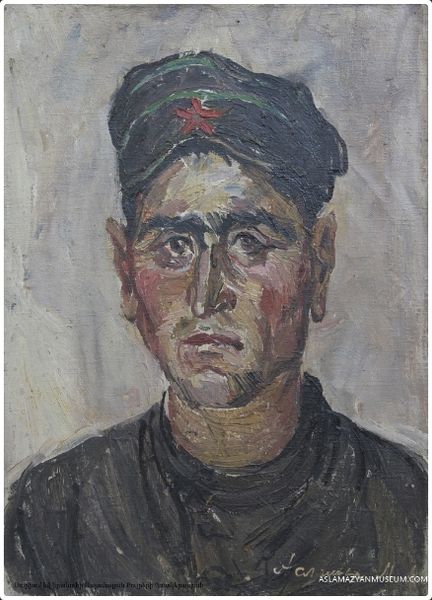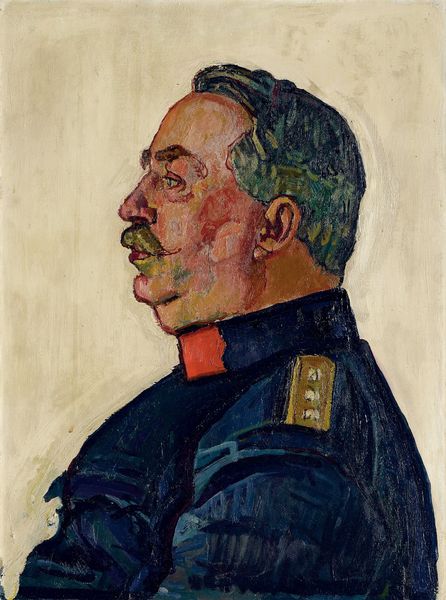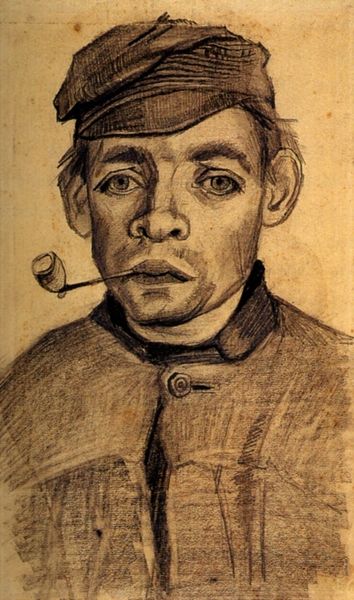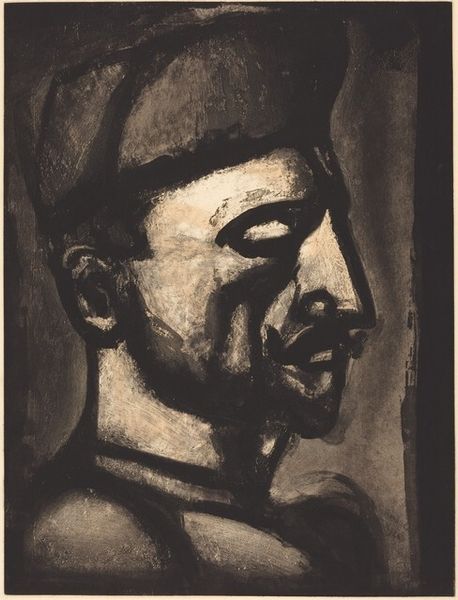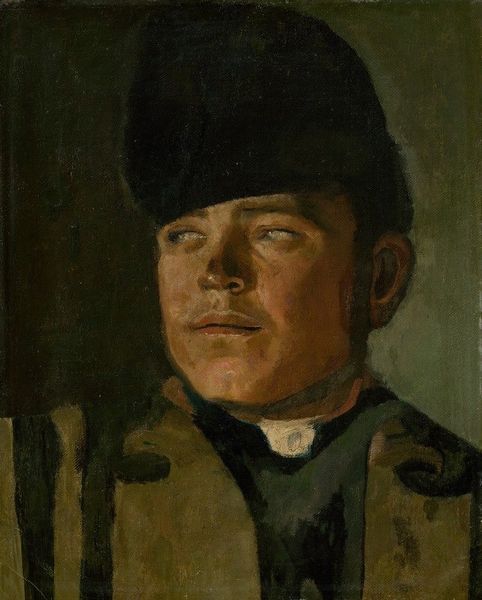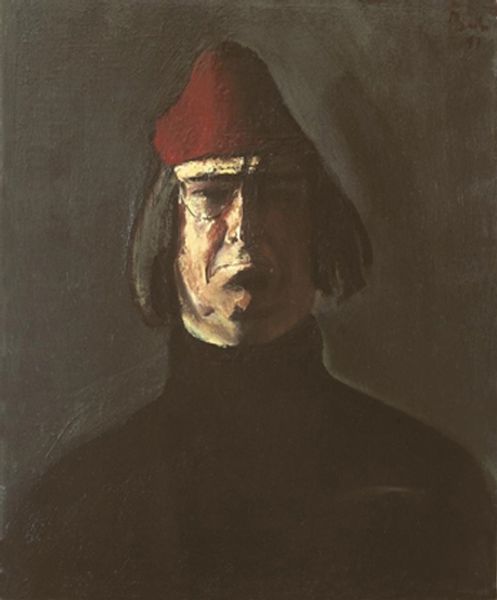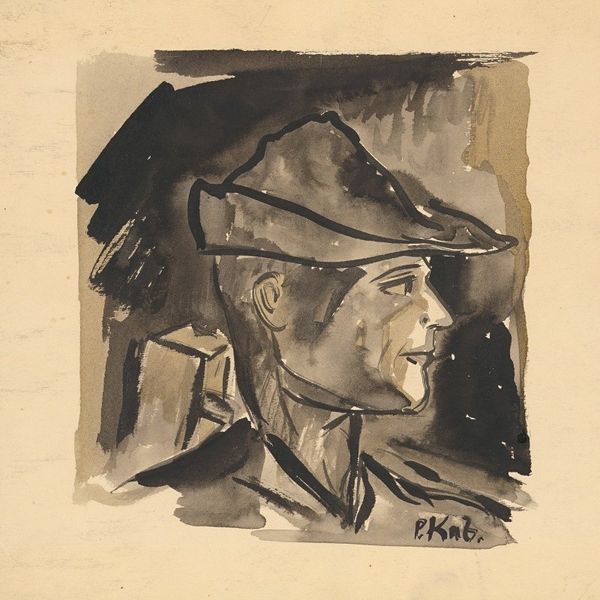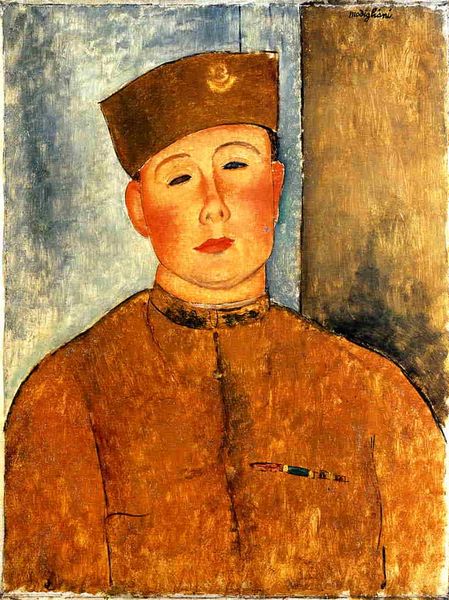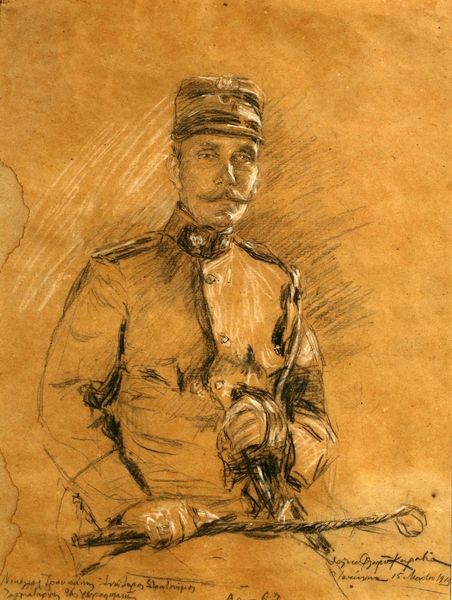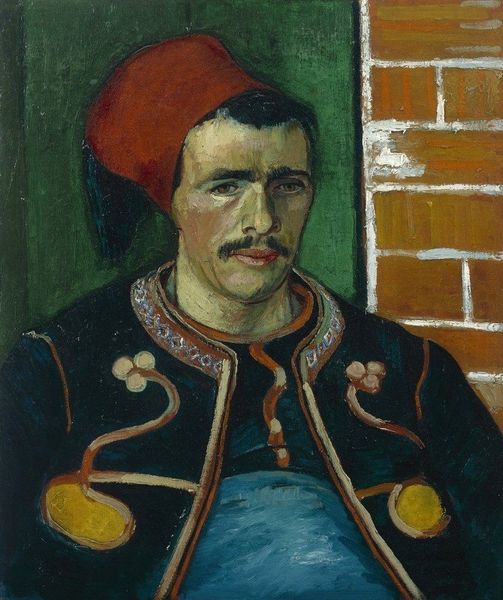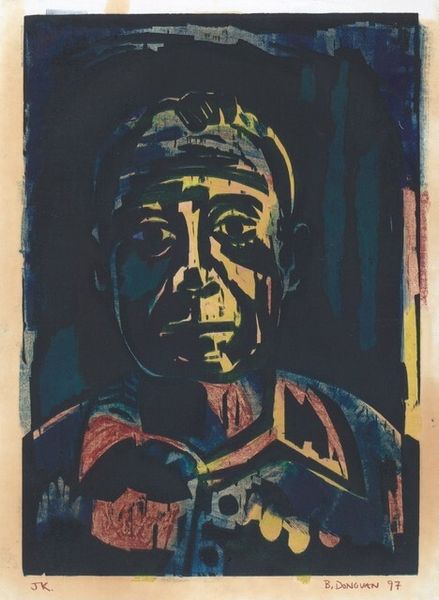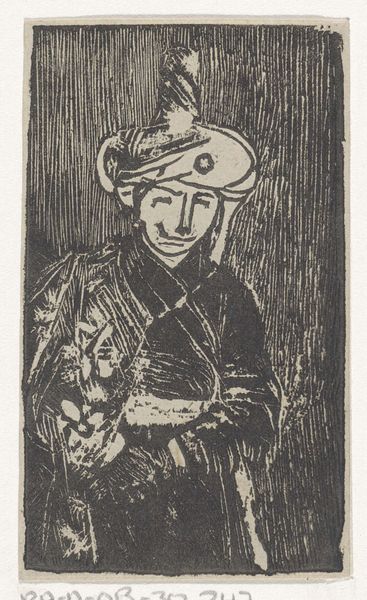
oil-paint
#
portrait
#
self-portrait
#
oil-paint
#
german-expressionism
#
oil painting
#
portrait reference
#
expressionism
Dimensions: 50 x 40 cm
Copyright: Public domain
Editor: Here we have Walter Gramatté's "Self-portrait with a white face," painted in 1917 using oil paint. It’s a striking image, and the subject’s gaze is quite unnerving, isn’t it? How do you read this portrait, especially given its historical context? Curator: Indeed. Gramatté’s self-portrait, created during the First World War, powerfully reflects the trauma and alienation of the era. The pallid complexion combined with the military attire presents a stark tension. It begs the question: What does it mean for an artist to represent themselves in uniform with such a pronounced sense of dis-ease? Editor: It’s like he's stripped bare, even within the uniform. The whiteness of his face makes him appear vulnerable, almost ghostly. Is this a statement about identity during wartime? Curator: Precisely. The Expressionists often used distorted forms and heightened colors to convey psychological truths. Here, Gramatté seems to be challenging the romanticized notions of war, revealing instead a deeply personal experience of crisis. Consider how identity, especially for those marginalized or ‘othered,’ is often amplified or erased during times of conflict. Do you see how that tension might be playing out here? Editor: I do. It's like he's questioning his own participation in a system that demands conformity, even at the cost of his individual self. So the 'white face' could be about losing his identity? Curator: It is a symbolic gesture of resistance against the dehumanizing effects of war. By presenting himself with this ghostly pallor, Gramatté critiques the societal pressures to conform and highlights the internal struggles faced by many during this period. It is important to analyse not just individual experience but structural oppression and enforced assimiliation. Editor: That makes so much sense. It’s far more than just a portrait; it’s a commentary on the self in relation to the overwhelming forces of history and society. Thanks for unpacking that! Curator: Absolutely. Remember to always look beyond the surface and question the underlying narratives. Understanding the intersection of identity, power, and historical context will significantly deepen your engagement with art.
Comments
No comments
Be the first to comment and join the conversation on the ultimate creative platform.
